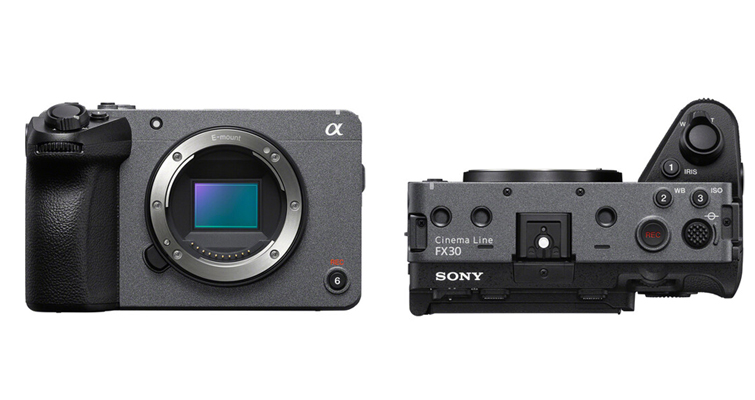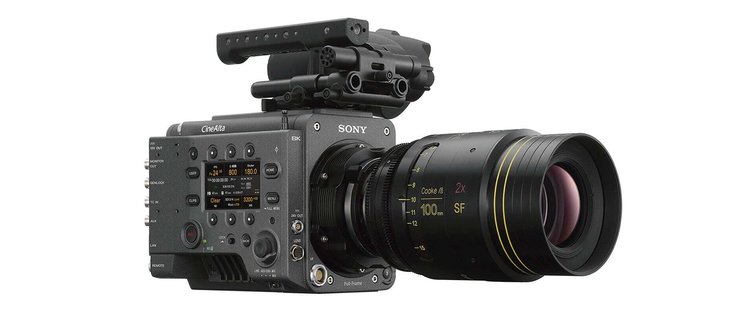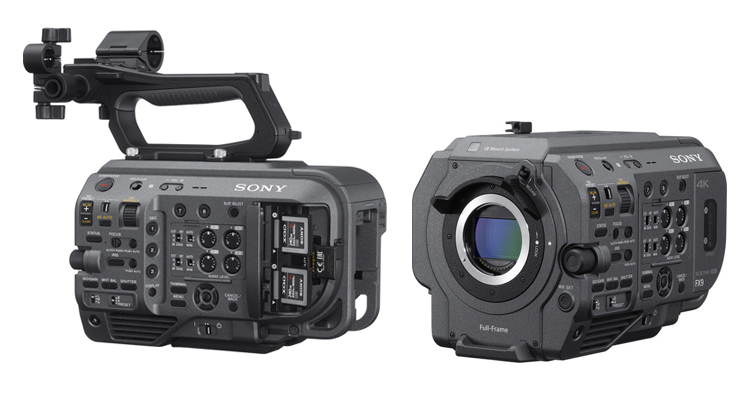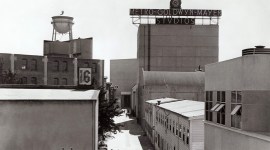
How Does the Sony FX30 Compare To Other Sony Cinema Cameras?
Is this the camera for creators to upgrade to Sony’s cinema camera line? Does it pair well with other Sony cameras?
Are you a creator looking to upgrade from a photo/video camera to a dedicated cinema camera? The FX30 may be your camera of choice. Sony’s FX series aims to bridge the gap and give you more cinematic control. Are you already using FX series cameras on productions but need something with a smaller form factor for tighter spaces? Let’s take a look at the available Sony cinema camera options.
Recently Sony announced the new FX30, the latest and smallest cinema line camera, even smaller and more affordable than the popular Sony FX3. The FX30 is just as capable as the FX3 and has features professional users expect in a cinema camera.
Sony FX30

Taking the small form factor and cinematic build quality you’d expect from the FX series and slapping in an APS-C sensor, the FX30 is a Super35 version of the FX3. Released in October 2022 at $1799, the FX30 has been a great addition to the mirrorless cinema lineup Sony has been growing over the years.
Bringing a 26MP APS-C backside-illuminated CMOS sensor that can capture 4k up to 60p and even oversample it from 6k, 4k/120p capture with a crop of 1.62x. Video capture options are what you’d expect with 10-bit 4:2:2, 4:2:0, H.265, or H.264 AVC files available.
Stabilization is controlled both digitally and mechanically, offering solid and smooth stabilized shots when shooting; if you want to take it further, you can use Sony’s Catalyst software which uses the gyro metadata built in from the video file metadata to digitally correct and stabilize your footage.
LUTs (look-up tables) have become such a popular way of finding a preset or building your own and tinkering with an image’s color tone for the perfect look for your footage; with the FX30, you can upload custom LUT’s so you can shoot and preview the footage even before it hits the editing workspace.
Key Specs:-
- 6K, APS-C/ Super 35mm backside-illuminated CMOS sensor
- Resolution at QFHD (3840 x 2160)
- Mechanical 5-Axis Active IBIS / Digital (Using Sony Catalyst)
- Size & Weight: 129.7 x 77.8 x 84.5 mm / 562 g
- Shooting Log Options – Cine EI / Cine EI Quick / Flexible ISO
- Cinema Look / S-Log: S-Cinetone, s709 / S-Log 3, HLG
- Recording format: XAVC S / XAVC S-I / XAVC HS
- Bit-Depth / Codec: 10/8bit 4:2:2, Long GOP, All-I / H.264, H.265
If you’ve had a test drive of the FX3 and loved the build, button placement, and quality you got from it, then the FX30 is a worthy small sibling and a great entry point for anyone who wants to move up into the cinema camera systems from something like the Alpha series.
Sony VENICE

The VENICE is the flagship cinema camera from Sony. Most recently, the camera (and its detachable sensor) was used to film inside the cockpits of Top Gun Maverick, Black Panther: Wakanda Forever, and is also the camera behind James Cameron’s upcoming Avatar sequels.
We’ve previously covered the Sony VENICE 2 and its 8.6K capabilities. The main thing to note is that most of these Sony cinema line cameras are built off of the color science developed for VENICE. This is a competent professional cinema camera that starts at around $58,000. So it’s not something you can easily compare the FX30 to. It’s literally the top of the line, whereas the FX30 is the entry-level camera in the cinema line.
Let’s dive into the rest of the Sony cinema line to which we can compare the FX30.
Sony FX3

The FX3 was until recently the smallest and cheapest option for the Sony cinematic camera lineup, offering its 12.1MP full-frame sensor with built-in E-mount that can shoot 4k/60p and slo-mo at 4k/120p. Many people then compared the FX3 to the A7S III, which had an impressive feature set for a mirrorless camera.
Though the A7S III is cheaper and designed with photography in mind as well as clean, crisp video, the FX3 solely focuses on cinematic-grade video quality with its rugged slight build and design and features such as 15-stop dynamic range and 16-bit raw output via HDMI port aimed towards professional filmmakers who need these.
Even though the FX30 has only recently been announced and is soon to be released, the FX3 is still a solid full-frame option for both size and cinematic video quality options.
Key Specs:-
- 12.1MP Full-Frame CMOS Exmor R Sensor
- 10-Bit 4:2:2 XAVC S-I,16-Bit Raw Output
- UHD 4K up to 120 | 1080p up to 240
- 80 to 409,600 ISO Range
- Compact Form Factor
- AutoFocus Options: Phase Detection AF/Face Tracking/Eye AF
- S-Cinetone/S-Log3/HLG, 15+ Stops DR
- Dual CFexpress Type A/SDXC Card Slots
The FX3 remains one of the most popular newer cameras you will often encounter on set because of its the form factor, ease of use, price, and solid auto-focus. To date, I’ve seen several FX3s working as the B-cam on interviews and talking-head videos where the primary camera op will shoot on the FX6 or FX9 and use the FX3 and its auto-focus for cutaway shots. The FX3 is also a solid choice for gimble work because it’s lightweight and makes it easy for those quick pick-up shots or run-and-gun types of scenarios.
Sony FX6
The FX6 was released in December 2020 and had some solid production features, such as electronic variable ND (¼-1/128), a full-frame 4k back-illuminated image sensor, and a higher ISO range from 320-409,600.

Design-wise it is a production camera through and through with multiple tactile buttons across the side and the top handle, which holds the 3.5” LCD monitor. However, it falls under the “cinema line” within Sony’s lineup. Still, it does feel like a blend of both the alpha and FX series (like the FX9 had a baby with the A7Sii) with its lightweight and compact form factor in regards to rivals (at the time) like the Canon’s C70, which has a Super35 sensor compared to the FX6’s full-frame.
It’s not the oldest on the list, and it is still a capable camera, even in 2022. It gives the user a great size, weight, and features right out of the box.
Key Specs:-
- 4K Full-Frame 10.2MP CMOS Exmor R Sensor
- DCI 4K60p | UHD 4K120 | 1080p240
- 10-Bit 4:2:2 XAVC-I/16-Bit Raw Output
- 800-12,800 ISO Base / 320-409,600 Max
- 15+ Stops of Dynamic Range in S-Log 3 EI
- Dual CFexpress Type A/SDXC Card Slots
- S-Cinetone, S-Log3, HLG Modes
- Lightweight at under 2lb
- Compact Design
- AF Options: Phase Detection AF/Face Tracking/Eye AF
Suppose you’re a fan of the Alpha series and need something more built for cinematic shooting with things like XLR inputs, SDI, and built-in electronic variable NDs with easy operation. In that case, the FX6 is a solid upgrade and choice. The Sony FX6 is popular on television sets and in docu-style series like Deadliest Catch.
Sony FX9
The oldest out of the lineup, released at the end of 2019, the FX9 is an absolute beast. The FX9 offers a full-frame 6k sensor with 15 stops of dynamic range and HDR, Dual base ISO up to 102,400, and can record in 4K 4:2:2 10-bit internally.
As you’d expect from the big boy of the lineup, you get all the bells and whistles you’d expect from a top-tier cinema camera for the price, it’s a true workhorse, and it will give you every ounce of performance you’d expect. I, for one, will say it is a heavy camera once all rigged up with a cine lens, monitor, and anything else you’d want to attach to it via a rigging system.

Key Specs-
- 6K Full-Frame Exmor R CMOS Sensor
- 15 Stops of Dynamic Range, Dynamic HDR
- 10-Bit 4:2:2 XAVC-I up to 600 Mb/s
- DCI 4K and UHD 4K up to 60p
- Quad Full HD 120p Raw with XDCA-FX9 Unit
- HD Recording up to 150/180 fps
- Dual Base ISO up to 102,400, HLG Mode
- Auto-HD, AF, 7-Stop ND Filter, 3D LUTs
- 12G/6G/3G-SDI & HDMI Output up to 4K
- Sony E-Mount
Can we see a new version of the FX9 soon? It’s still trendy within the cinema camera world, often recommended by industry professionals and enthusiasts who love the Sony workflow. Like the FX6, the FX9 is used quite a bit in television and docu-series. There are several productions on HBO Max, TNT, and A&E that have been shot on the FX9.
All images via Sony
For more on Sony, check out the articles below:





